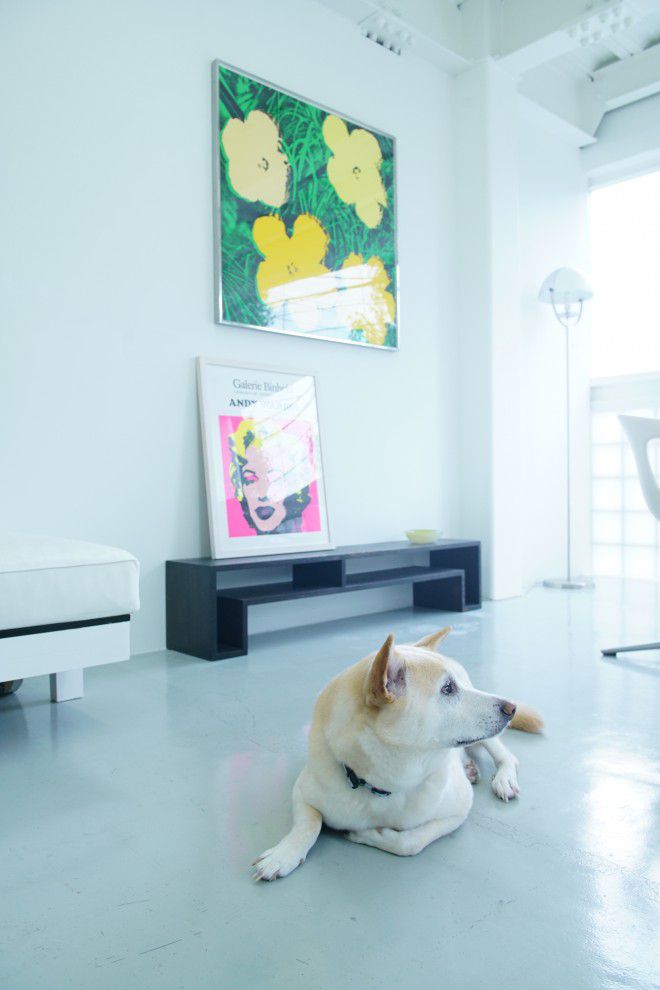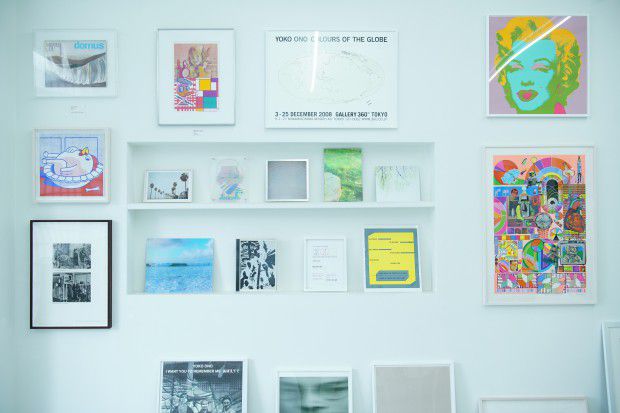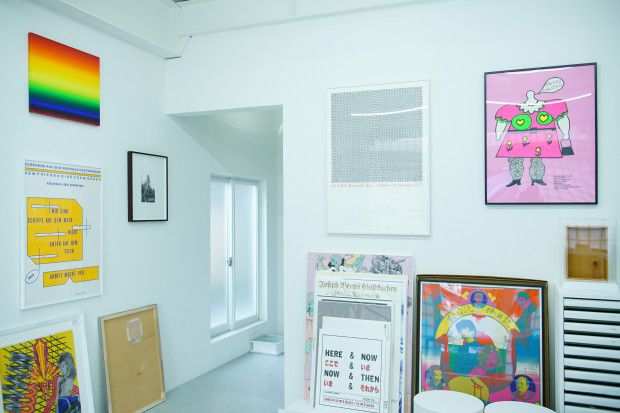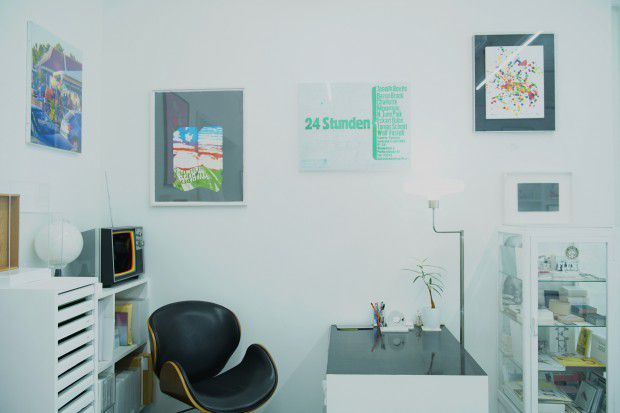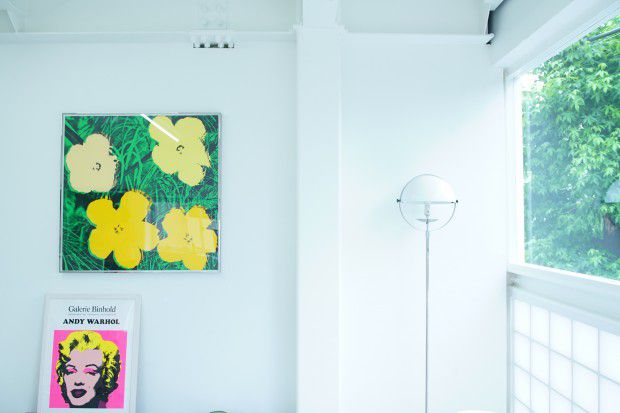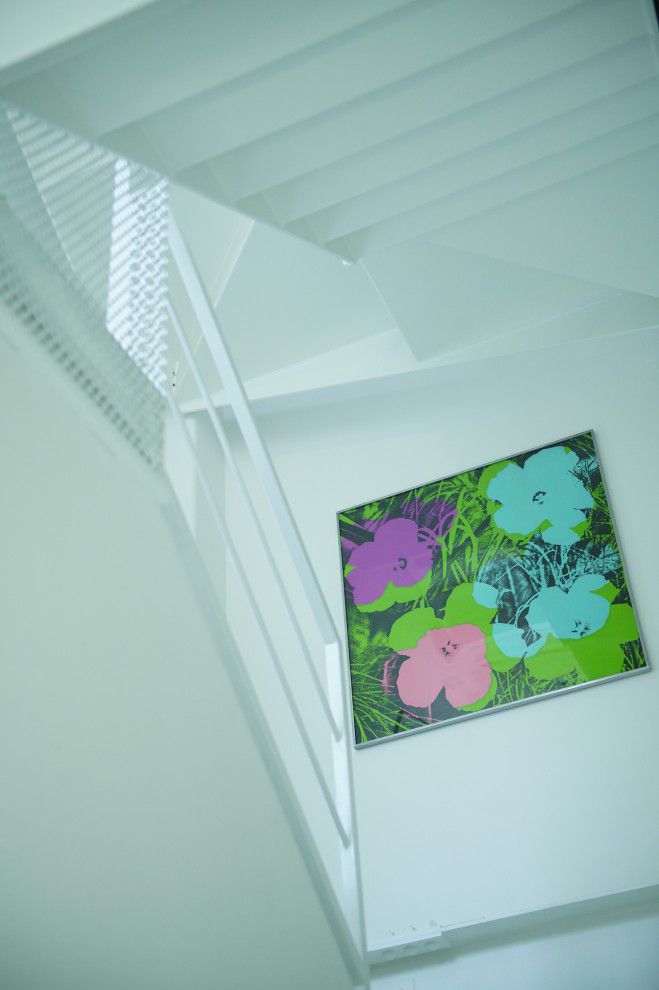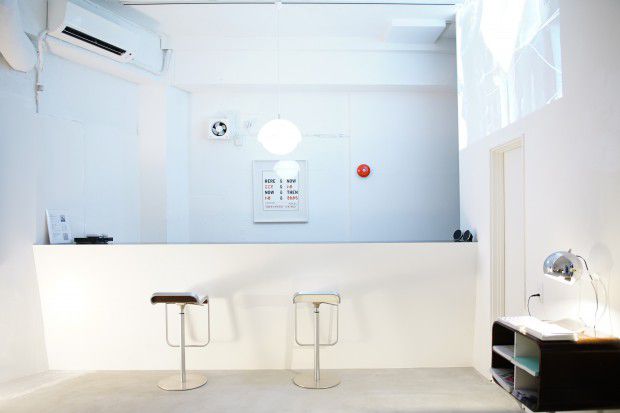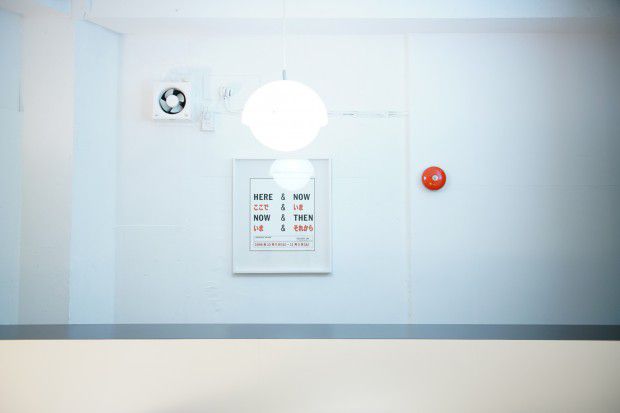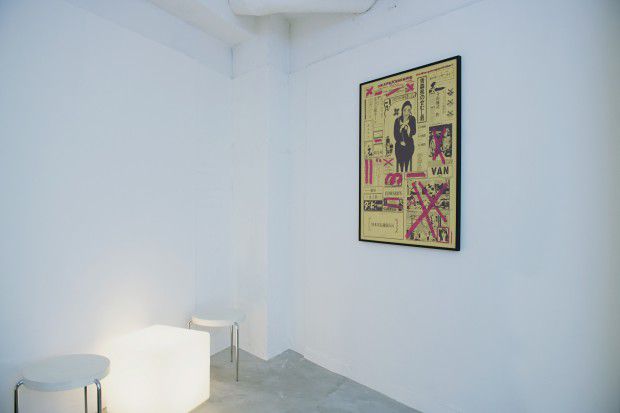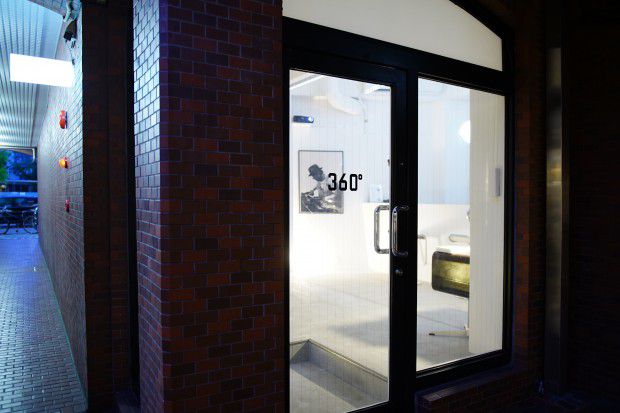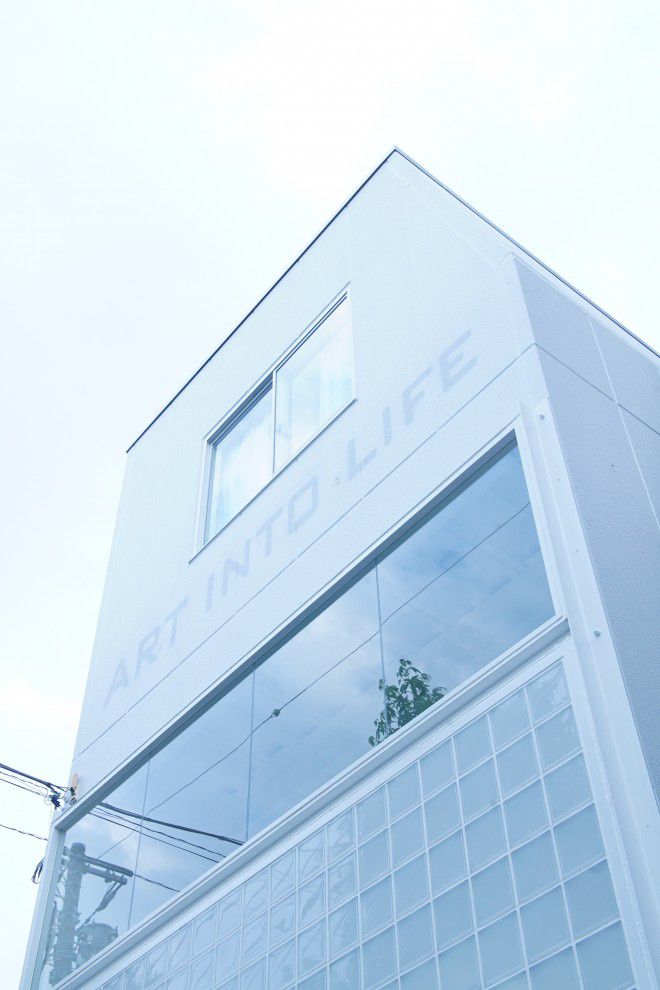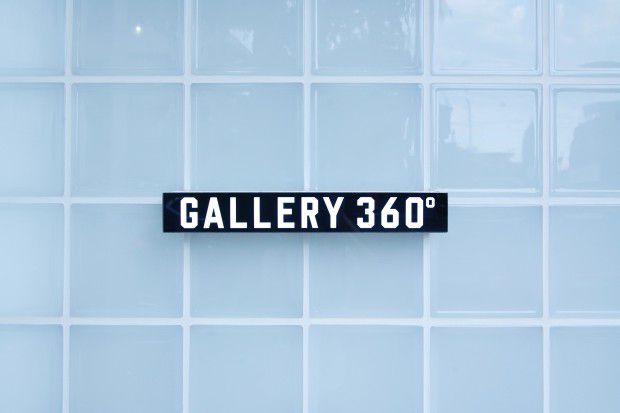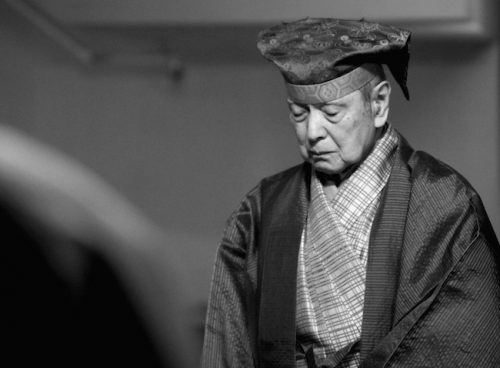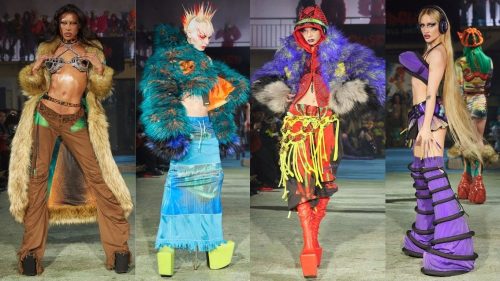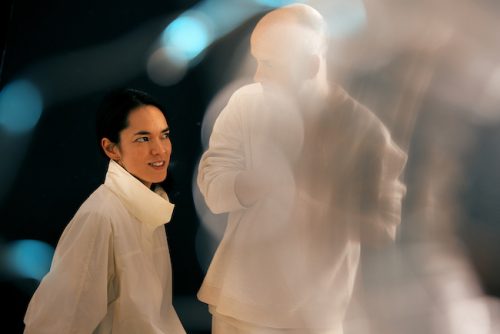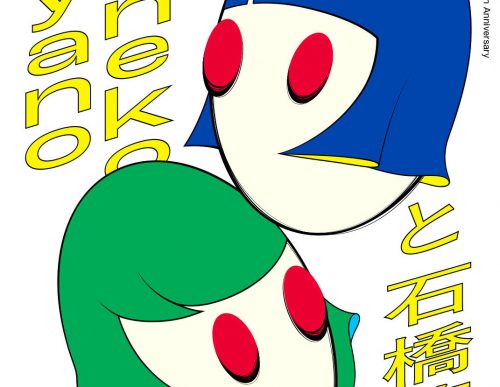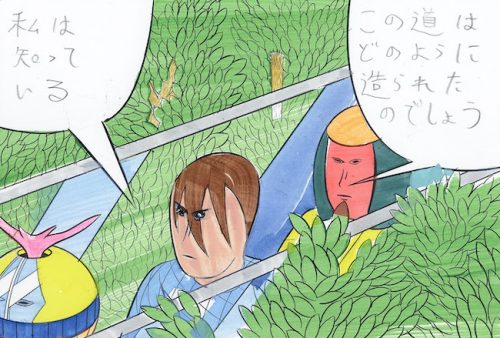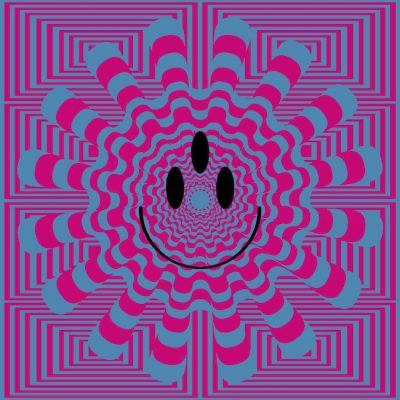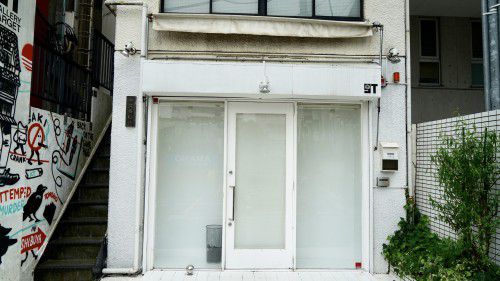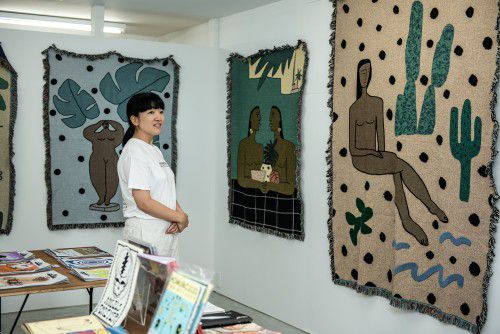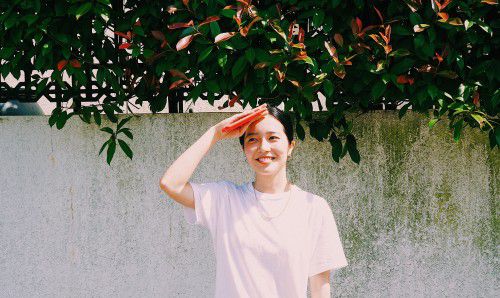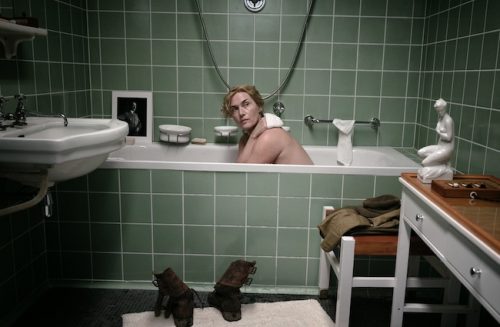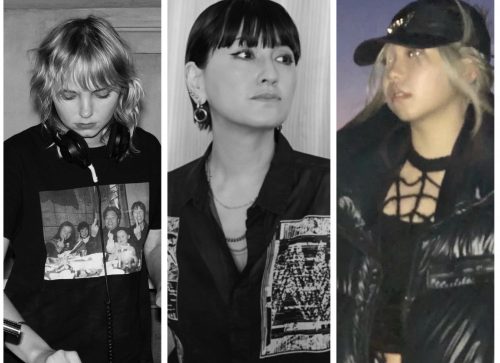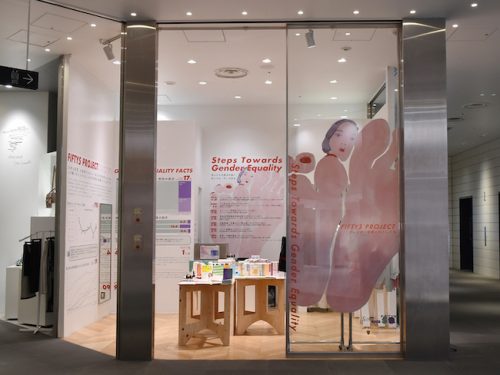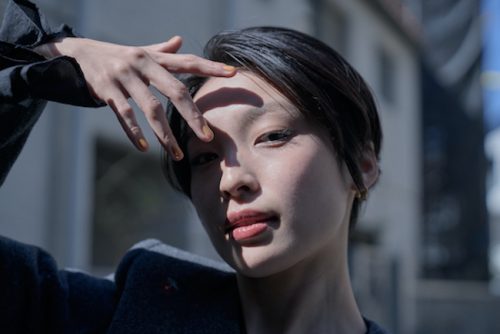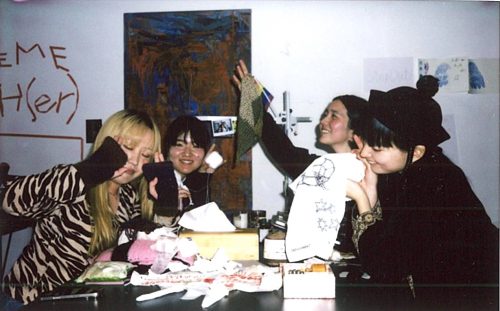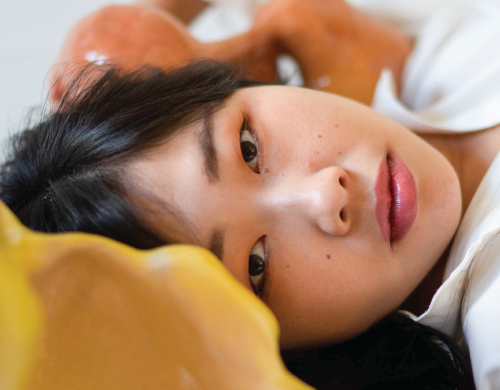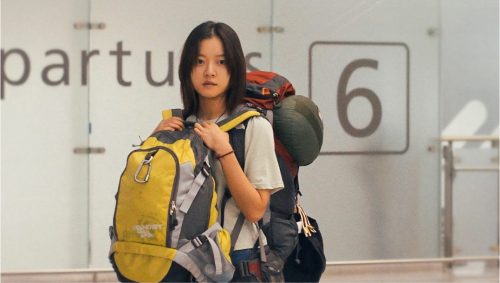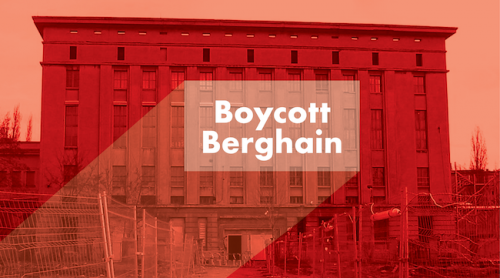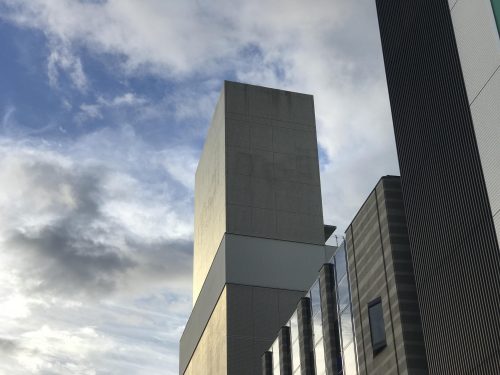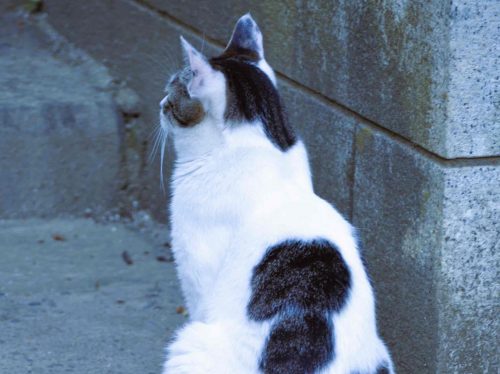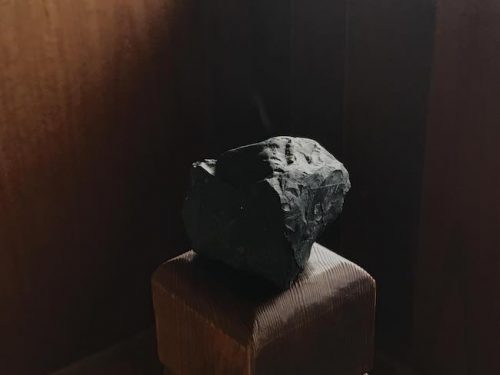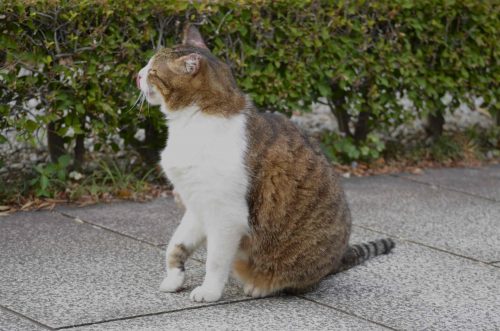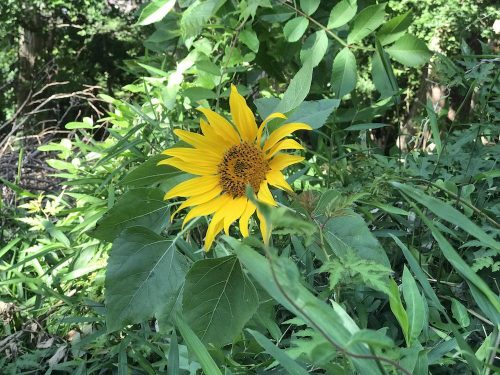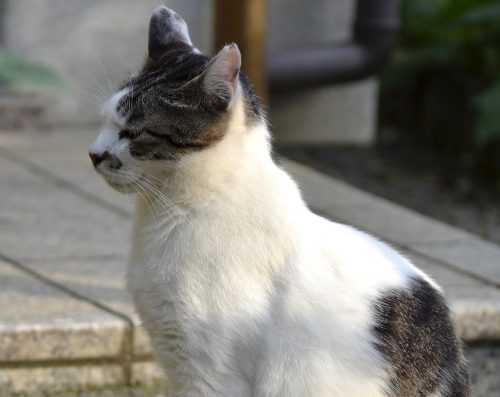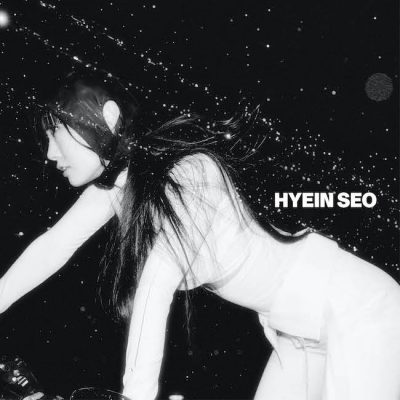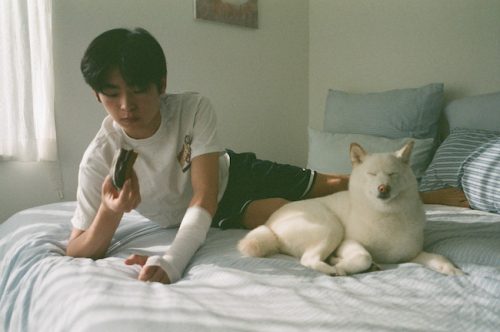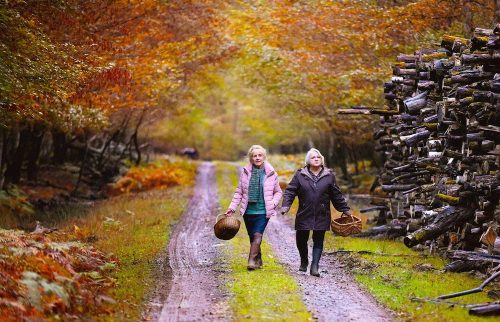オノ・ヨーコ、ローレンス・ウィナー、フルクサスなど錚々たるアーティストが名を連ねる表参道のGALLERY 360°が、2017年の末に尾山台に移転。さらに2018年6月にはワタリウム美術館近くにギャラリー&バーをオープンさせるなど新しい展開を見せている。自由で風通しの良い空気の中に、背筋が伸びるような凛としたアートへの深い尊敬と愛情を感じさせる独特の佇まいを持ったこのギャラリーはどのようにして生まれ、育まれてきたのか。改めて、ディレクター・菅谷幸に自身の歴史とともに語ってもらった。
Omotesando’s GALLERY 360°, known for prominent artists like Yoko Ono, Lawrence Weiner and Fluxus, has relocated to Oyamadai at the end of 2017. In addition, it is developing new opportunities, opening a gallery & bar near the Watari Museum of Contemporary Art in June 2018. Among a good space that is free and airy are dignified artworks that are respected and loved. How was this gallery with a unique appearance established and developed? We sat down with Director Miyuki Sugaya as she talked to us about the gallery along with her own background.
——GALLERY 360°は表参道の印象が強かったのですが、もともと原宿の先、現在のGALLERY TARGETの場所にあったそうですね。
菅谷「そうなんです。1982年10月に私たちがギャラリーをオープンした当時、いまGALLERY TARGETがあるエリアは80年代カルチャーが芽吹く話題の場所でした。すぐ近くには『ア・ストア・ロボット』などがあって、プラスチックスや藤原ヒロシさん始めとんがった人たちが集まって盛り上がっていて。ロボットに来たお客さんが360°の前を通って、ちょっと覗きに来てくれたりもしました。また、『ピテカントロプス・エレクトス』というギャラリーやクラブがある地下空間で、ナム・ジュン・パイクと坂本龍一のイベントをやっていたりしていてね。『カル・デ・サック』というイエローマジックやムーンライダーズらテクノ系のミュージシャンが集まっていたカフェバーもありました。大人っぽくて素敵な空間でしたよ。当時そういったエリアだったので、私たちもギャラリーをそのエリアでオープンさせました」
——ギャラリーの知識や経験があってオープンされたのですか?
菅谷「全くありませんでした。私が22歳、主人(根本寿幸)が33歳だった。主人は団塊世代で、東北出身。上京当時の60年代後半は新宿でアングラ文化が花盛りで、そこに大きな影響を受けた人なんです。街を歩いていたら、土方巽がどてらの下に盆栽をタスキで括り付けて背負いながら現在のアルタ前を一日中歩き回っているのを見たそうです。行きつけの新宿のアングラな人たちが集まる凮月堂というカフェでモーニング・サービスを食べて、お昼になれば新宿西口にある通称ションベン横丁で一番安い定食を食べて、また凮月堂カフェに戻ってお茶を飲む生活を送っていたそうなのですが、そんな道すがらアヴァンギャルドなパフォーマンスを目にするわけです。大島渚が唐十郎や横尾忠則と作った『新宿泥棒日記』という映画の撮影を街頭でしていたりね。そういった光景を見ちゃうと、何をやっているのかは分からないけれど惹かれてしまう。せっかく興味深いものがあるのに見逃したくないと、ネットも無い時代なので周りにいる人たちに聞いたり、翌日の新聞の文化欄の記事を読んだり、一生懸命に情報収集をしていたみたい。そこから彼は前衛の道まっしぐらになっていったわけです」
–I had a strong impression of GALLERY 360°being located in Omotesando, but I heard that it was originally just ahead of Harajuku, at its current location.
Sugaya: “That’s right. At the time when we opened the gallery in October of 1982, the area where Gallery Target is now located was known to be an 80s-culture hub. Just near it was “A Store Robot” where edgy people like Plastics and Hiroshi Fujiwara would gather and be livelily. Customers who went to Robot would pass by our gallery and come in to take a look. Also, Nam June Paik and Ryuichi Sakamoto would hold a book launch ceremony in an underground space with galleries and clubs called “Pithecanthropus Erectus”. There was also a café-bar called “Cul de Sac” where techno-musicians like Yellow Magic Orchestra and Moonriders hung out. It was a sophisticated and elegant space. It was that kind of area back then, so we too, opened a gallery in that area.”
–Did you open with knowledge and experience in galleries?
Sugaya: “I had none. I was 22, and my husband (Toshiyuki Nemoto) was 33. My husband is a baby-boomer and is from the Tohoku area. He was greatly influenced by the late 60s underground culture that was flowering when he came down to Tokyo. He says he saw Tatsumi Hijikata carrying a bonsai tied with a tasuki (a cord that tucks up sleeves of Kimonos or Yukatas) under his dotera (a padded kimono) and walking around all day in front of what’s now Alta (a fashion building in Shinjuku). Apparently my husband ate breakfast at a café called Fugetsudo where ‘underground’ people would gather, then eat the most inexpensive lunch at a place referred to as “Shonben Yokocho” just outside of the Shinjuku west exit, then go back to Fugetsudo to have some tea. That was his lifestyle, but my husband would see such avant-garde peformances. Like when Nagisa Oshima was shooting the film “Diary of a Shinjuku Thief” with Juro Kara and Tadanari Yokoo. Even though he doesn’t know what they are doing, when he sees scenarios like that he gets attracted to them. Since they were such interesting things and he doesn’t want to miss out on them, having no internet back then, he would ask the people around him, or read the culture column in the newspaper the next day and try everything to gather as much information as he could. That’s how he came to follow the avant-garde path.”
——アートに携わるまで、根本さんは何をされていたのですか?
菅谷「ヒッピーです(笑)。ヒッピーの人たちはおしゃれな恰好していたり目を引く存在だったので、当時の一般の人たちが新宿あたりを中心に沸き起こっていた若者文化について知りたがったんです。週刊誌で特集されたり、有名なディスコが出来るとそこのオープニングで賑やかしで謝礼をもらって呼ばれたり、デパートのファッションショーにも駆り出されていたんですよ。『マスコミで話題になっているヒッピーがほしい』って呼ばれるんです(笑)」
——今で言う、インフルエンサーですね(笑)! 一方、菅谷さんはジョン・ケージのパフォーマンスに感銘を受けてアートに傾倒したとお聞きしたのですが。
菅谷「私は千葉の成田空港の近くに実家があって、そこから上京したのです。主人がウォーホルのインタビュー誌の影響を受けて『UP』というカルチャー雑誌を作っていたのですが、私も編集者になりたかったものですからその編集部に行き着いて手伝っていました。その頃は西武美術館という名前で、今のセゾン美術館が池袋の西武デパートの最上階にありまして、現代美術の紹介に力を入れてやっていたんです。ヨーゼフ・ボイスを呼んだりセザールの展覧会をやったり、現代美術を知るなら西武美術館へ通わなきゃというような凄い時代だったんです。その西武美術館が軽井沢にもオープンするということで、その幕開けはマルセル・デュシャン展だったのですが、すでに亡くなっていたデュシャンの代理人としてジョン・ケージが来日し、パフォーマンスをすることになったのです。それを『UP』で取材をすることとなり、その頃はジョン・ケージのことは名前しか知りませんでしたけれど、どんなものか確かめたいなというくらいの気持ちで行きました。その場にいるのは当時の現代音楽を牽引している人たちばかりで、私たちは本当に場違いでしたけどね(笑)。演奏したのはデュシャンが作った曲だったりしたのですが、いい場所に座れたので譜面が見えたんです。そしたら、五線譜に何にも書いてない。音符が無いんです。そのかわりに縦や横や斜めの線が飛び飛びに散らばっていて、それを見てケージは指揮をしていたんですけれど、私が学校で習ったものとはまるで違う指揮だし、『オタマジャクシがないのになんで音楽が出来るの?』と。でもそれを演奏者の人たちは読み取って美しい演奏になっていたものですから、『私が知らない世界でちゃんと一つの約束事があって、音楽というものが成立しているんだ』と気づいて、頭をガンと殴られたような衝撃を受けました。今までの12音階の音符がある音楽とは違う世界で奏でられている音楽にものすごく驚いたのは、主人がアルタ前で土方巽を見たときと同じ。『この世界を知らないと人生損しちゃうんじゃないか?』と思ったんです。それで私も、前衛の道まっしぐらになりました」
–Before dealing with art, what was he doing?
Sugaya: “He was a hippie, haha. Hippies dressed fashionably and stood out, so regular people back then wanted to know more about the youth culture boiling around Shinjuku. They would be featured in weekly magazines, be invited to popular discos to hype up the scene, and even be seen in department store fashion shows. They would be invited like, “We want a hippie that is a hot topic among the media”.”
–As we say today, an “influencer”! On the other hand, I heard you were impressed by John Cage’s performance and came to be devoted to art?
Sugaya: “My parents’ home was near Narita airport in Chiba Prefecture, and I came to Tokyo from there. My husband was influenced by Warhol’s interview magazine and created a culture magazine called “UP”. I wanted to become an editor, so I commuted to the editorial department and helped out. It was called the Seibu Museum of Art back then, and the Sezon Museum of Art that we know of today was located on the top floor of Seibu department store. They put emphasis on introducing contemporary art. It was an amazing era when they would invite Joseph Beuys, hold César exhibitions and many great artists – if you wanted to know about contemporary art, you had to go to the Seibu Museum of Art. When the Seibu Museum opened in Karuizawa, the opening exhibition was Marcel Duchamp. Since Duchamp had already passed away, John Cage came to Japan in his place and performed. We decided to do an interview for him with UP. I only knew of his name back then, and I went into it with pure curiosity. The people there were all people leading contemporary music, and we really felt out of place, haha. The performance contained songs composed by Duchamp et al, and we had good seats so we were able to see the music score. The thing is, there was nothing written on it. No notes. In place of it, there were vertical, horizontal and diagonal lines here and there, and Cage was conducting from it. It was completely different from what I had learned in school, and I was thinking, “Why is music playing when no tadpoles (notes) are there?”. However, the performers understood and a beautiful performance was being created, so I realized, “There must be one promise among the music world that I don’t know of, and that is how music happens”. I was so surprised, it felt as if someone had hit me in the head. Being blown away by music that is created in a different world from the music I knew of with 12 tone notes, was the same as my husband being in awe when seeing Tatsumi Hijikata. I thought, “It’s a shame if humans do not know of this world.” That is how I too, came to follow the avant-garde path.”
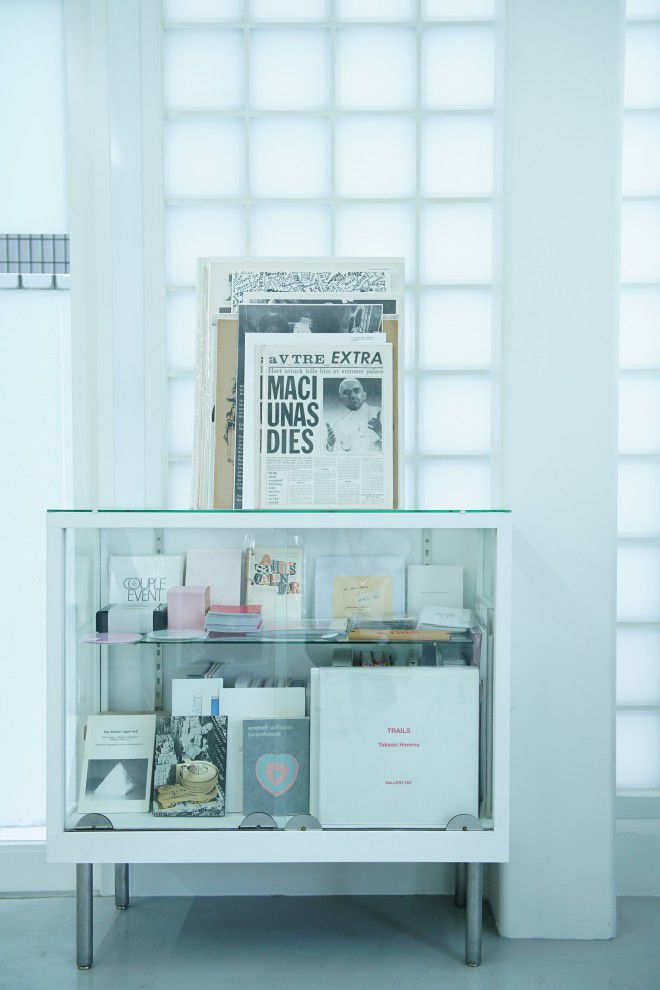
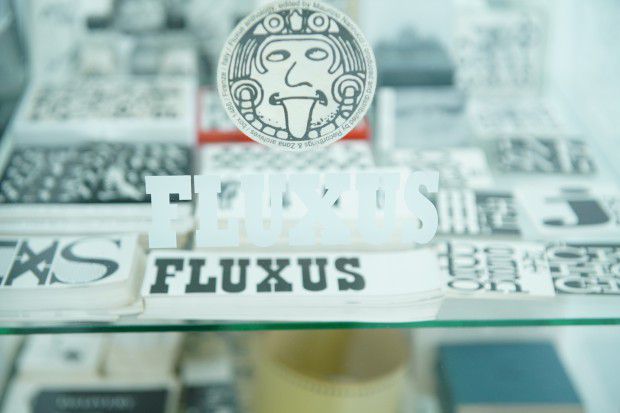
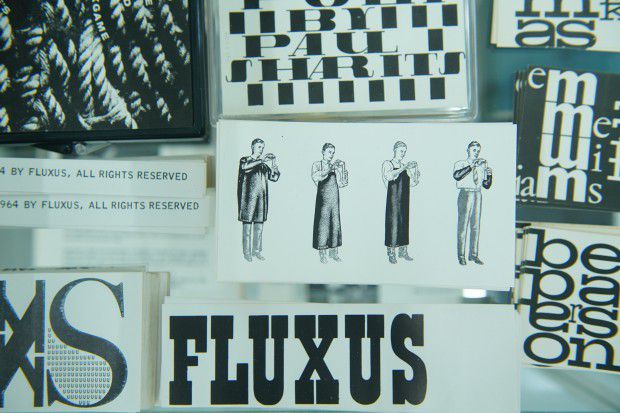
――それほどに衝撃だったのですね。
菅谷「そもそも前衛的なものに惹かれるということは、今生きているこの社会に納得出来る居場所が無いということだったと思います。常識やルールに縛られない、新しい価値観のあるその居場所を探して行きついた先が現代美術だった。でも、ジョン・ケージは知ったけれど、他の現代美術や音楽にはそこまで惹かれはしなかったんです。そんな中で主人がオノ・ヨーコの『grapefruit』をくれて。それを読んでいくうちに、オノ・ヨーコという人が私と同じことで悩んでいて、彼女の方がもっと傷ついて痛みを伴いながらこの本のひとつひとつの言葉を紡ぎだしていると感じたのです。この人がいる世界なら私もそこで生きてみたいなと思えました。彼女の作品を通して、それ以降はドンドン前衛の世界に入っていくことができました。ジョン・ケージとオノ・ヨーコのアートによって、その後の人生が決まりましたね。私は特に、早めに決められたということも良かったかもしれません。そうでなければもっとフラフラした曖昧な20代だったと思います」
——居心地の悪さとはどういったものだったのでしょうか。
菅谷「私は千葉の農家の長女として生まれたのですが、当時農家にとって女の子は価値が低かった。長男は大事にされる一方、私には『女なんか教育をしなくてもいい、嫁に行った先に気に入られさえすれば』というようなことを子どもの頃から言われ続けていて、反発の気持ちが大きくなっていました。『絶対に親が言うような人間にはなるまい』とね。なんとか実家からエスケープして、自分の道を見つけて歩んでいかなくちゃと思い続けていました。そういう意味でもオノさんのアートに惹かれたのだと思います」
——そういった鬱屈した気持ちをパワーに変えてアートに向けていったのですね。アートへの関わり方は色々あったかと思いますが、なぜギャラリーという道を選んだのですか。
菅谷「60年代はアメリカン・ポップ・アートが台頭していて、その中でアンディ・ウォーホルというスターがバンドをプロデュースしたり、雑誌を発行したり、そんな芸術家なんて過去にいませんでしたから、沢山のメディアに取り上げられていました。私たちはそれを見て、どうやら彼がFACTORYというスタジオをやっていて、そこには夜な夜な面白い人たちが集まっていると知り、憧れていました。それで自分たちも友達同士で集まることができるサロンのような空間が欲しいねって、何の考えもなく始めちゃったんですよ。22歳でギャラリーを開いちゃったので、勉強しながらの毎日で。この世界で生きていこうと思ったらその世界のことを知らないと、と。とにかく日々勉強していました」
–It must have had a great impact on you.
Sugaya: “Being attracted to avant-garde things in the first place told me that I had no comfortable place to be in the society I live in today. When I was searching for a place I belong, where there are new values that don’t follow rules and are not restricting, contemporary art was the answer. However, although I knew John Cage, I was not that attracted to other contemporary art or music. Amongst that, my husband gave me Yoko Ono’s “grapefruit”. As I read it, I realized that this person named Yoko Ono went through the same struggles as I did, even, she was hurt more, which lead her to write down the words that she did. If there are people like her in this world, I wanted to try to live in it. After reading her book, I was able to dig deeper into the avant-garde world. My life thereon was decided by John Cage and Yoko Ono. It may have been especially good that I had decided early on. If not for that, I think I may have mindlessly floated around in my 20s.”
–What does it mean to be uncomfortable or not belong anywhere?
Sugaya: “I was born into a farmer’s house in Chiba as the oldest child. Back then, girls were not regarded highly by farmers. Whereas an oldest son would be cherished, I was told as a child that “girls don’t need an education, they just need to be liked by their future husbands”. My feelings of resistance got bigger and bigger – “I will never live the way my father want me to” were the words I felt. I somehow escaped from my parents’ house, and kept thinking that I had to find my own path and follow it. I believe I was intrigued by Yoko Ono’s art in that way.”
— You changed your gloomy feelings into power and found an outlet through art. I believe you have dealt with art in many different ways, but why did you decide to pursue a path in running a gallery?
Sugaya: “In the 60s American pop art was on the rise, and among that a star named Andy Warhol produced bands, and published magazines. There were no artists that did such things before him, so he was featured in the media like crazy. We saw this and found out that he ran a studio called FACTORY where interesting people gathered every night. We were so fond of it. Then, we started saying how we wanted our own space, like a salon, where our friends can hang out, and we started without thinking further. Since I ended up opening a gallery at 22, every day I learned as I went. If I had decided to live in this world, I had to know more about that world. I just studied day and night.”
――最初の頃はどんな作品を取り扱っていたのでしょう。
菅谷「ヨーゼフ・ボイス、アンディ・ウォーホルやジョン・ケージたちの版画展をやったりしていました。というのも、今とは状況が全く違って、80年代は海外の現代美術を取り扱うギャラリーがほとんど無かったのです。なおかつ銀座にあるギャラリーが日本人作家を中心に紹介していたので、そことの差別化で神宮前という場所を選んでやっていたわけです。その頃はギャルリー・ワタリ(現ワタリウム美術館)が若い現代美術が好きな人たちのたまり場だったので、そこを目標にして自分たちも近くでやろうというのも場所選びの理由です。当時は洋書を販売している書店も少なく、手に入らないものはNYからわざわざ取り寄せたりして、海外の作品の情報を手に入れていました。今でこそZineというものが日本にもありますが、当時は海外で若手のアーティストがZineを作って自分の作品を掲載したりしていましたので、そういったものを手に入れるには取り寄せるしかなかった。そんなことをしていましたので、採算なんて度外視でしたけれど、若さと情熱だけで工夫しながらなんとかやりくりしていました。主人は60年代に新宿にあったポップ・アートやサイケデリックなポスター屋さんによく行っていたためか、ポスターが好きだったので、国内のポスター屋さんが閉店して残った在庫をツテを辿って安く引き取って販売していたりね。オープンしてから2,3年は大変でしたが、1985年頃にはバブルが少しずつ始まってきて、そこで余裕が出来たんです。当時は田名網敬一さんや横尾忠則さんの版画展をやったりしていましたが、景気が良かったから展示会をやれば作品が売れたのです。今ほど家賃もかかりませんでしたからね」
——怒涛の時代の到来ですね。
菅谷「80年代は海外アーティストの作品を売ることにすごく忙しかった。バブル期は本当に恐ろしいほどお金が飛び交っていて、ウォーホルのミック・ジャガーの作品もバブル前は45万でたまに売れるといった感じでしたが、バブル最盛期は10倍の価格で飛ぶように売れていました。そうこうするうち90年代に入ってバブルが弾け、その後全然売れなくなりました。ウォーホルやボイスが亡くなったということも私たちにとっては大きなことでした。本当に一つの時代が終わったといった感じでした。それでこれからは自分たちも今までやれてこなかった新しい活動を展開する必要があると思い、ちょうど知人で表参道にビルを持っている人が『フロアが空いている。ギャラリーをやるなら是非使って欲しい』と言ってくれたこともあって、まだバブルの余韻が残る1993年のうちに表参道に引っ越したのです。新しい場所で新しい活動をしよう、と。主人は若い頃大工をやっていたこともあり、以前のギャラリーも修繕して綺麗に使っていたし、空間を作るのが上手でした。その頃から現代美術でインスタレーションのように空間を使う作品が出てきていて、表参道のフロアはちょうど良かったのです。日本人アーティストにも注目が集まり始めていたので、日本人の若手アーティストを紹介していくプログラムも考えました」
–What kind of artwork did you handle at first?
Sugaya: “We held printmaking exhibitions by Joseph Beuys, Andy Warhol, John Cage et al. The gallery world was a lot different from today. In the 80s, there were little to no galleries in Japan that handled contemporary art from abroad. Moreover, the galleries in Ginza mainly showcased Japanese artists, so we picked Jingu-mae as our location to contrast with them. “Gallerie Watari” (now known as Watari Museum of Contemporary Art) was the place where young people who liked contemporary art would gather, so we wanted to aim for that and located ourselves close by. There were not many bookstores that sold foreign books, so we ordered from New York and gathered information about foreign artwork that way. We have Zine in Japan today, but back then young, foreign artists used Zine to post their artwork so to get a hold of that we would have to get it shipped. Since we did such things, profit was out of the picture. We somehow managed with our youth and passion. Perhaps because my husband often went to pop art/psychedelic poster shops that they had in the 60s, he liked posters and would buy off posters in shops that closed down for cheap and resell them. The first two or three years after opening was difficult, but the bubble economy started around 1985 and we were able to create some leeway. We held Keiichi Tanaami or Tadanori Yokoo’s prints exhibition, and since the economy was good we were able to sell art if we held exhibitions. The rent wasn’t as expensive as today either.”
–And then, it was the start of a rocky era.
Sugaya: “In the 80s, we were busy trying to sell foreign artists’ works. During the bubble economy, the flow of money was almost scary. Warhol’s Mick Jagger piece sold for $4K before the bubble economy, but during the bubble peak it sold for 10 times more. As we went through that, we entered the 90s and the bubble burst, resulting in much lower sales. The fact that Warhol and Beuys passed also had a great impact on us. It really felt like one generation had ended. We started thinking that we had an obligation to develop a new movement that we had not done before. Just around the same time, an acquaintance who owned a building in Omotesando told us, “There’s an open floor. If you’re doing a gallery, I want you to open one here.” So we moved to Omotesando while the bubble was still settling down in 1993, to start a new movement in a new place. My husband was a carpenter when he was younger, so he repaired our past gallery and used it well, and was good at making spaces. From that time, installations in contemporary art were appearing, and the Omotesando floor was perfect for that. Since we also received attention from Japanese artists, we curated a program to introduce young Japanese artists.”
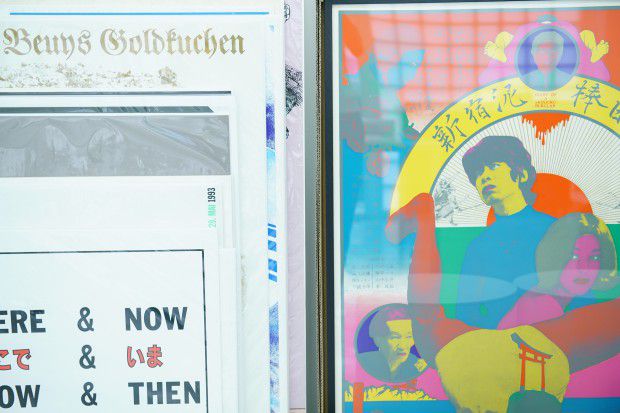
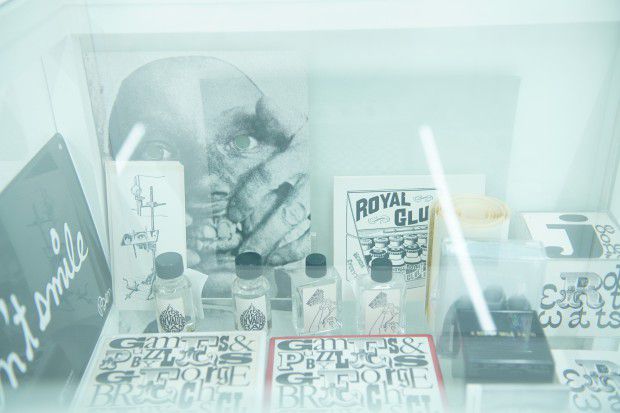
——神宮前の頃からショップとギャラリーの併設というスタイルをとられていたのですか?
菅谷「はい。私たちは若かったから、一点何百万円のキャンバスよりはポスターやポストカード、書籍の方が身近に感じていたんです。もともと収集癖があるわけでもないので、アートをみんなで鑑賞して、語り合って楽しめるようなものの方が性に合っていました。‘90年にはエディションもしていこうと、最初の試みとしてローレンス・ウェイナーに作品制作をお願いしました。それ以降はアーティストの展覧会と同時に、国際作家やギャラリー・アーティストのマルチプルや版画の制作という二本の柱でやっています。当時の思いとしては、とにかく生活の中にアートを取り入れてほしかったのです。その当時の日本人コレクターの人たちは投資目的の人が多かったのですが、もっと日常生活の中で楽しめるアートがあってもいいのではないかと思ったのです。海外のコレクターのお宅では皆さん作品を壁にかけていて、それを見ながら食事したりお酒飲んだり、本当に日常生活の中でアートを楽しんでいる。ディナーのときに皆でアートについて語り合ったり、作品を買った時のエピソードを話したり、とても楽しいし、日本人もこんな生活をしたいよねと。そこで、手頃な価格で作品が手に入れられる場所を自分たちが提供できたらと、パブリッシュを始めました。主人も元々アーティスト志望だったし、私も編集といった作業にすごく興味があったから、アーティストのセンスがもちろん根幹にあるものだけれど,それをどう具現化して落とし込んでいくのかといったことはパブリッシャーの私たちの感覚も大切になってきます。アーティストによってはマルチプルに対し具体的な案がないこともあるので、そこを私たちがアドバイスする。例えば日本でパブリッシュするのであれば日本的な素材が良いのではと提案するなど、お互いがコラボレーションしているといった感覚です」
——なるほど。360°では日本のアーティストを育てていくということもやっていらっしゃいます。
菅谷「育てるというほど力はありませんが、若いアーティストは表現したいことがあるのにそのための場所がないことが多い。お金の面で志を曲げて表現活動をやめてほしくないという思いがあるので、私たちがその場を提供するのは大事なことです。もともと商売で始めてないというのもあると思います。だから商売下手なところもあるのですが(笑)。主人だって昔は自分の作品を発表する空間がなかったわけで、そういう体験があったから自分たちが出来る範囲内で応援したいとは常に思っています」
–Did you have the style of adjoining a shop and gallery from when you were at Jingu-mae?
Sugaya: “Yes. Since we were young, we felt more at home with posters, postcards and books rather than paintings that cost thousands of dollars. It wasn’t like we originally had a hobby for collecting, so we enjoyed seeing art with everyone and discussing it more. We decided we wanted to do limited editions in the 90s, so we asked Lawrence Weiner for our first attempt. Since then, along with artists’ exhibitions we showcase international artists, various gallery artists, or printmaking creations. Our wish then was simply, for people to incorporate art into their daily lives. Most Japanese collectors back then collected for investment purposes, but I believed that there could be more art enjoyed in our daily lives. In foreign collectors’ homes, there are artworks hung on the walls that people would look at while dining, or drinking. They really enjoy art in their daily lives. Discussing art during dinner times and talking about the times they bought art is so fun, and I wished Japanese people could live a life like that too. We started publishing to provide a space where art can be purchased for a reasonable price. My husband originally wanted to be an artist, and I had a lot of interest in editorial work. Although the artist’s intuitions and senses are fundamental, the way in which that is brought to life is heavily dependent on us, the publishers as well. Depending on the artist, some may not have specific suggestions so that is when we advise them. For example, if we were publishing in Japan, we would suggest that there should be a Japan-like element. It feels like a collaboration to both sides.”
–I see. At 360°, you do things to raise Japanese artists too.
Sugaya: “I wouldn’t say ‘raise’, but young artists have so much to express yet there are no spaces for them to. I don’t want them to throw their ambitions away and stop expressing because of financial strains, so it is important that we provide a place for them. I think it’s also because we did not begin with a commercial purpose. That’s why I’m so bad at selling, haha. Especially since my husband did not have a place to showcase his art either, we feel that we would like to do as much as we can to support.”
——その思いが根底にあるから、アーティストとの関係性も風通しが良いのですね。
菅谷「それはやっぱり、私たちが尊敬できるアーティストと共に歩みたいという気持ちでやっているからだと思います。360°で何かやってくれたアーティストというのは皆、私たちが尊敬しているアーティストだから、自ずと風通しは良くなります。それに、アーティストの意志はいの一番に尊重されるべきだとも思っています。例えばオノ・ヨーコさんには神宮前の頃からずっと手紙を出していて、彼女も私たちのギャラリーに来ようとしてくれていたのですが叶わず。それが遂に1996年にご縁があって彼女のキュレーターのジョン・ヘンドリックスが私たちのギャラリーを訪ねてくれたことで展覧会をする運びになりました。60年代のインストラクションである『青い部屋のイヴェント』と、当時描いていた点描の作品『フランクリン・サマー』のシリーズを展示して、そこから少しずつオノさんと関係を築いて2001年からは毎年のように展覧会をすることが出来ました。そのように共に歴史を刻んでいけるのが理想です」
——オノさんの展覧会が実現した時の気持ちはどんなものでしたか?
菅谷「嬉しい気持ちもありつつ、反対に責任感の方が重くのしかかってきました。オノ・ヨーコの展覧会をやるということは、彼女の活動に泥を塗らないように今後のギャラリー運営もしっかりやらなくてはならない。オノさんは私にとってはマスターなので、マスターに対して失礼なことは出来ないですし、私の人生を形作ってくれた人のアートに対して最大の尊敬と畏怖の念をもっていかなければならないという思いがひしひしと大きくなりました。根本も’83年に開催されたウォーホルの大規模な展覧会に関わり、『KIKU』『LOVE』というシリーズを日本で制作するプロジェクトに関わったのですが、互いにお互いのマスターと仕事ができて幸せな人生だと思います。私は家出同然で実家から出て、現代美術を通して世代や人種を超えていろんな出会いがありました。同じような思いを分かち合える人との出会いは、この上ない喜びです。現代美術がずっと私にそういう人とめぐり合わせてくれたのです。この受けた恩恵をお返ししていきたいので、微力ながら尾山台と神宮前という場所から皆に現代美術の楽しさを知ってもらえるような活動をしていきたいです」
–Perhaps because those intensions are deeply rooted, your relationships with the artists are very open.
Sugaya: “That is because we proceed with the desire to work with artists that we truly admire. Artist that have done something at 360° are all artists that we admire, so naturally we achieve an open-minded relationship. In addition, I believe that the artist’s intention should always come first. For example, we wrote letters to Yoko Ono from when we were at Jingu-mae, and she wanted to come to our gallery but it never happened. Then, in 1996 it was meant to be. Her curator, John Hendricks visited our gallery and we proceeded to holding an exhibition for her. We showed the 60s instruction, “Blue Room Event” and a series of “Flranklin Summer” that she drew then and built our relationship with her little by little. By 2001, we held exhibitions with her on a yearly basis. It is our goal to build history with each other.”
–How did you feel when your exhibition with Yoko Ono’s came true?
Sugaya: “I was very happy, but I felt a greater sense of responsibility that weighed down on me. To hold an exhibition with Yoko Ono meant that we had to continue to do well with our gallery in order to not hurt her name. Ono is a master to me, so we could never do anything rude to a master, and so my thought that I had to treat the person who crafted my life with respect and awe got bigger and bigger as the days went by. Nemoto also worked on the big Warhol exhibition in ’83, and took part in a project to create a series called “KIKU” and “LOVE” in Japan. We were so happy and grateful to have worked with each of our masters. I left my parents’ house, and through contemporary art met many great people regardless of their age or gender. There’s nothing greater than to meet people who can share the same thoughts as you. Contemporary art has allowed me to meet people like that. Because I want to give back for this gift I received, although small, I try to spread the greatness of contemporary art at Oyamadai and Jingu-mae.”
——尾山台のスペースの使い方はどうお考えでいらっしゃるのですか?
菅谷「自由が丘のはずれみたいな立地で小さな空間ですから、どうしようかと模索中です。2月末に引っ越してきたのですが、まだリノベーションも終わっていないのです。なので、展示はもう少しかかるかなと。また、『表参道で培ってきた360°の交友関係を引き継ぐべく、集える場所が必要なのでは』と友人の一人から提案があり、ワタリウムから1分くらいのところに小さなスペースですが見つけられたので、夜はバー、昼は7月からは展覧会を始めようと準備をしています。もともとサロンのような場所でアートを通して皆で会話するといったことがやりたくて始めたわけですから、原点回帰ですよね。今は文字だけのメールやラインのコミュニケーションで済む時代ですが、もう一度リアルな肉声で語り合う人間関係が築けるような場所を作りたい。歴史的に見ても、新しい何かが生まれたのはリアルな場からでした。インターネットが発展しても、リアルな人との会話を通して自分の考えをまとめたり、人の反応によって自分のアイデアを膨らませたりすることはとても大事です。たまたまの出会いが人生を変えてしまうことだって起こりますし、そういう可能性が秘めた場に360°がなれればいいなと思っています。世界には沢山の出会いがあるのです。それを求めて人生を深く楽しんでほしいですね、常に『芸術から日常へ』精神で!」
–How do you think you will use the space at Oyamadai?
Sugaya: “It’s kind of like the outskirts of Jiyugaoka, with a small space, so we are still exploring how to use it. We moved in at the end of February, but we haven’t even finished renovating it. So I believe it will take a little more time until we hold exhibitions. In addition, one of my friends suggested that “It should be a place where people can gather, that takes on the friendships cultivated at 360°Omotesando”, and since we found a small space about a minute away from Watari-um, we are preparing to use it as a bar at night, and from July, a gallery space during the day. Since we originally wanted to use a space like a salon to talk with friends through art, we are regressing back to our origin. Now we can communicate with typed words through LINE and emails, but I want to create a place for people to use their own voice to form relationships. Even looking back at history, new things were born in real settings. Even with the internet’s development, it is still important to talk with real people and organize your thoughts, and expand your ideas due to other people’s reactions. There are cases in which coincidental encounters can end up changing your life, and I would like GALLERY 360°to be a place where that kind of opportunity is hidden. There any many encounters in the world. I want people to greatly enjoy life by searching for that.Always with “ART INTO LIFE!”.”
東京都世田谷区尾山台1-17-14
TEL : 03-6809-8566
営業時間:金、土、日 12:00 〜18:00
*上記の営業日以外は、アポイントのみのお客様に対応させていただきます
Contact : gallery@360.co.jp
GALLERY 360°
1 Chome-17-14 Oyamadai
Setagaya-ku, Tōkyō-to
158-0086, Japan
TEL : +81-03-6809-8566
Business Hours: Friday, Sat, Sun 12:00 p.m.-6:00 p.m.
**We will accept visits on other business days through appointments only
Contact: gallery@360.co.jp
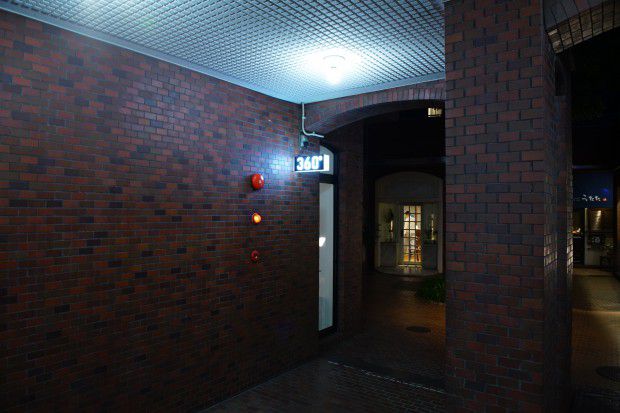
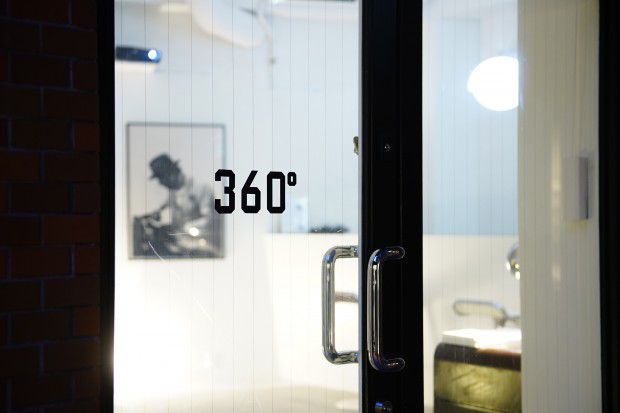
360° ‹ 神宮前 ›
東京都渋谷区神宮前3-1-24 ソフトタウン青山1F
TEL: 03-5410-2350
バー営業時間:月〜土 19:00〜 日休み
バー担当:ヴァリンダ(盛由子)
*展示期間など営業時間が変わることがあります。
Instagram, Facebookでご確認下さい。
http://360.co.jp
360°
Softtwon Aoyama 1F 3-1-24
Jinguumae Shibuya-Ku
Japan
TEL: 03-5410-2350
Bar Business Hours: Mon-Sat 7:00 p.m.~ closed on Sun
Bar contact: Valinda
**Business Hours are subject to chance during exhibitions.
Please check regularly on our Instagram and Facebook.
http://360.co.jp
photography Satomi Yamauchi
text& edit Ryoko Kuwahara
